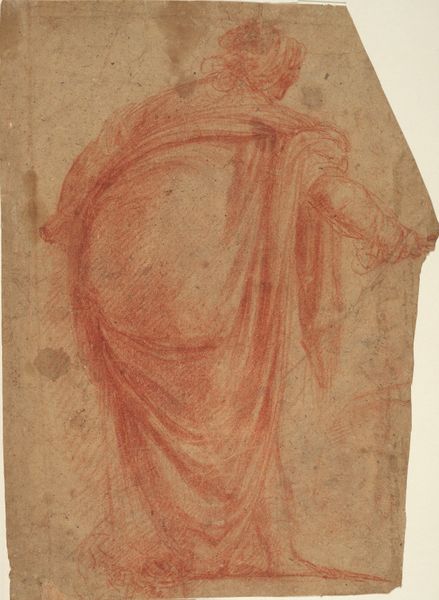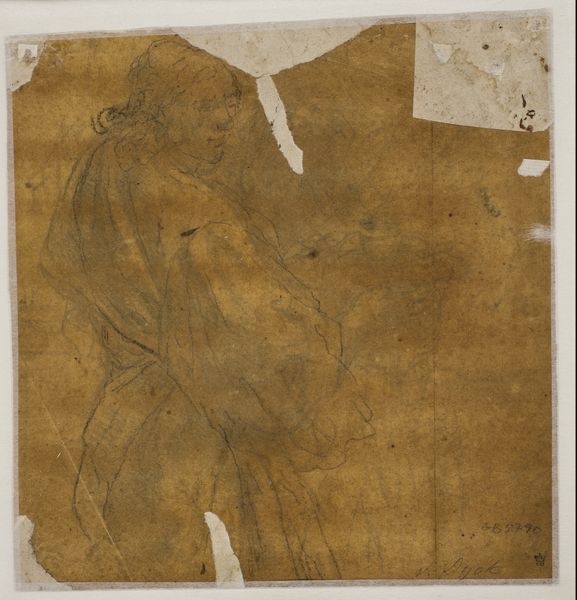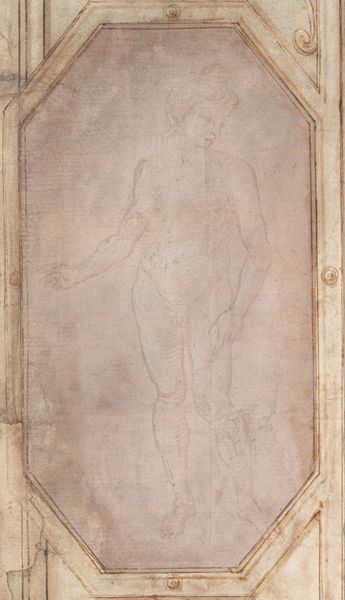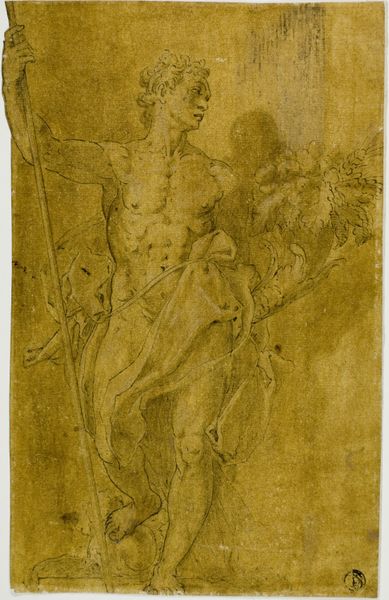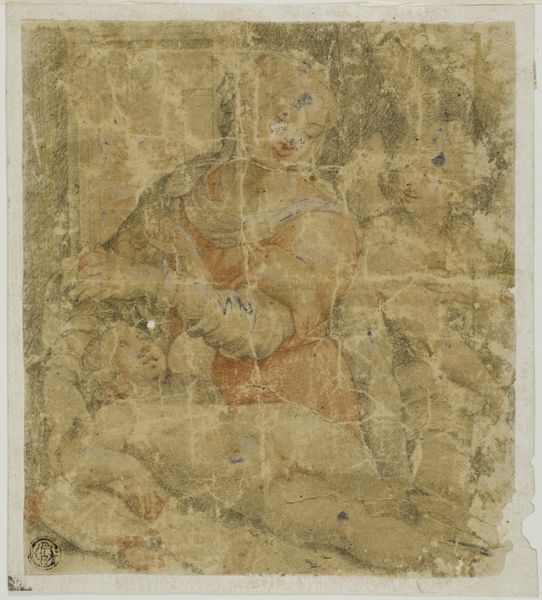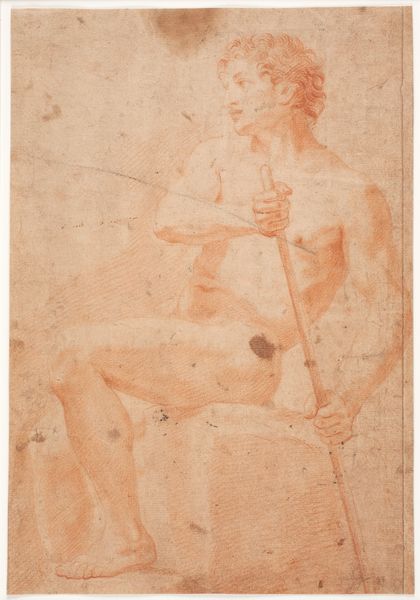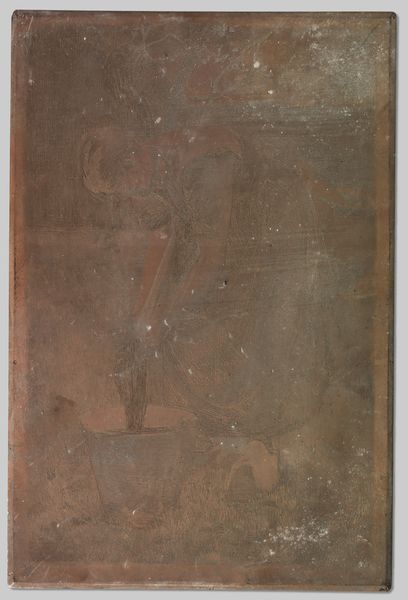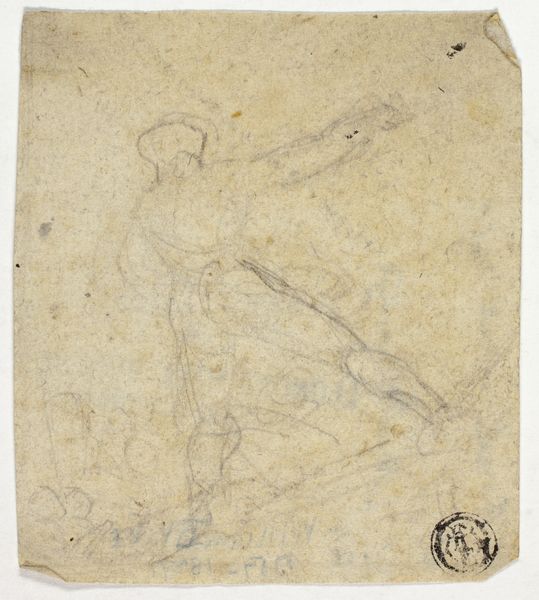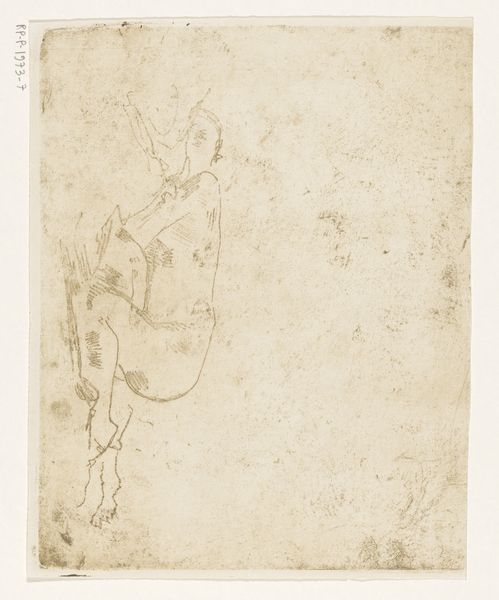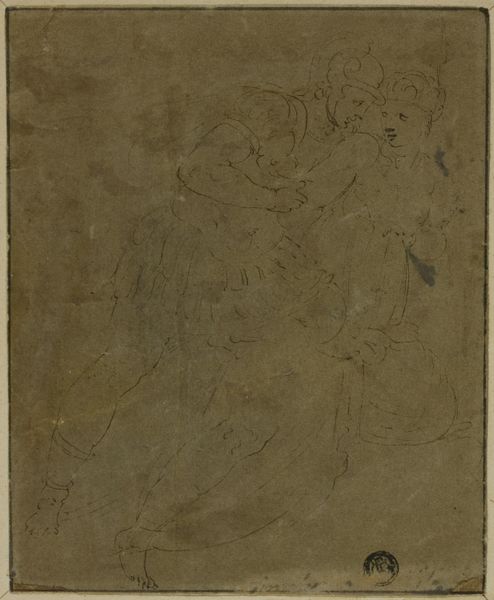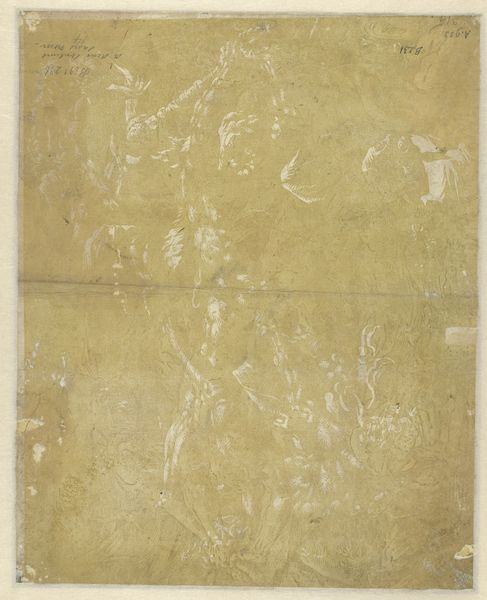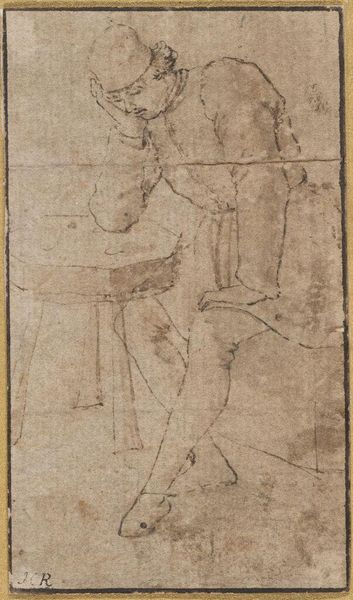
drawing, print, paper, chalk, charcoal
#
drawing
# print
#
charcoal drawing
#
figuration
#
paper
#
chalk
#
charcoal
#
history-painting
#
academic-art
#
charcoal
#
nude
Dimensions: 232 × 206 mm
Copyright: Public Domain
Editor: We’re looking at a drawing titled "Hercules," artist unknown, from an indeterminate date, held at the Art Institute of Chicago. It's rendered in chalk and charcoal on paper. It feels like a faded memory, this powerful figure sketched with such ephemeral materials. What stands out to you from a formalist perspective? Curator: The strength of this piece, I believe, lies in its careful arrangement of line and form. Observe how the artist uses chiaroscuro, the contrast between light and shadow, to define Hercules' muscular anatomy. The body, though faded, displays a deliberate curvature of lines that delineate his figure from the top of the head, down to the subtle torsion of the lower body, implying a sense of potential, yet contained energy. Editor: It's interesting how the damage to the paper almost enhances that feeling of ancient strength, something weathered but enduring. How does the composition contribute? Curator: Indeed. The cracks become part of its history. Consider the implied lines that direct the viewer's gaze. The angled positioning of the body relative to the frame generates a diagonal tension, countered by the relatively static background. This contrast creates visual interest, drawing us into the formal dynamism present even within this somewhat incomplete form. Editor: So, it's the interplay of these formal elements, line, shadow, composition, that create meaning, regardless of the subject's mythology? Curator: Precisely. While knowing it depicts Hercules adds another layer, the formal elements—the arrangement, contrast, and the visual weight—communicate power and resilience even without that knowledge. The semiotic possibilities generated by the formal aspects permit us to 'read' and interpret meaning in new, unforeseen ways. Editor: That’s fascinating. I appreciate learning how to detach the subject matter from the visual components in this way. Curator: Indeed. Seeing this allows us to build stronger relationships between the art object, theory and philosophy to decode artworks using their raw formal attributes.
Comments
No comments
Be the first to comment and join the conversation on the ultimate creative platform.
